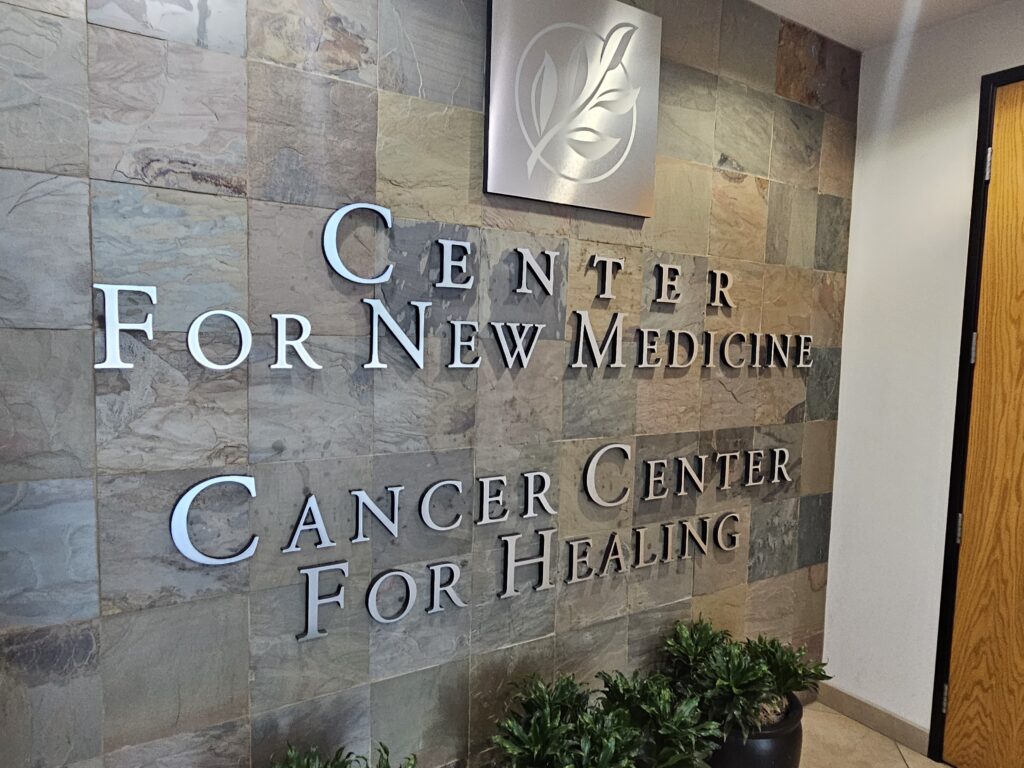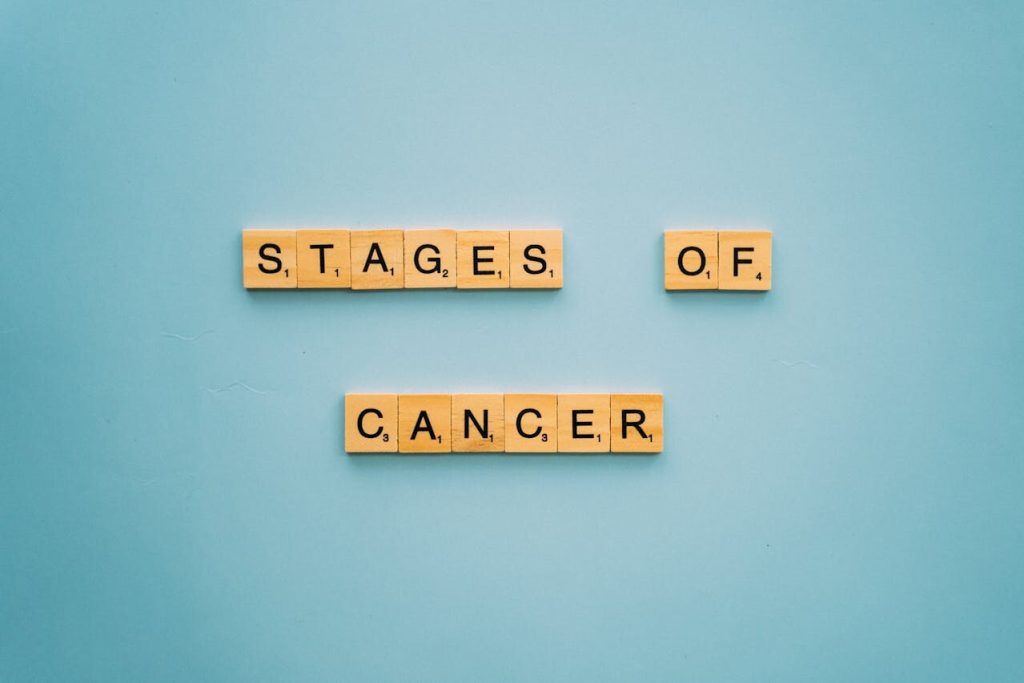Understanding the differences between wart and melanoma is crucial for preventing and treating skin cancer. Melanoma is a serious and potentially life-threatening form of skin cancer, while warts are generally benign and non-cancerous growths. Identifying the key differences between the two is essential for proper diagnosis and management.
Melanoma can develop anywhere on the body, but it most commonly appears on the face, neck, back, and legs. It usually presents as a dark, irregularly shaped spot or growth that continues to grow or change in appearance over time. In contrast, warts are small, rough, skin-colored bumps that typically appear on the hands, feet, and other areas of the body exposed to frequent friction or pressure.
If left untreated, melanoma can spread to other parts of the body, making early detection and treatment critical for improving outcomes. It is essential to know the signs and symptoms of melanoma and seek medical attention promptly if any changes in the skin are observed.
Key Takeaways:
- Melanoma is a serious and potentially life-threatening form of skin cancer.
- Warts are generally benign and non-cancerous growths.
- Melanoma can develop anywhere on the body and typically presents as a dark, irregularly shaped spot or growth.
- Warts are small, rough, skin-colored bumps that typically appear on the hands, feet, and other areas of the body exposed to frequent friction or pressure.
- Early detection and treatment of melanoma are critical for improving outcomes.
Understanding Warts
Warts are a common skin condition caused by the human papillomavirus (HPV). They are non-cancerous and typically appear as small, rough growths on the skin.
Common types of warts include:
| Type | Description |
|---|---|
| Common warts | Usually appear on the fingers, hands, and elbows |
| Plantar warts | Appear on the soles of the feet and can be painful |
| Flat warts | Typically appear on the face, neck, and legs |
| Genital warts | Occur in the genital area and are usually sexually transmitted |
Symptoms of warts may include:
- Small, raised growths on the skin
- Rough or bumpy texture
- Black dots in the center of the wart
- Pain or tenderness when pressed
It’s important to note that warts can be contagious and can spread to other parts of the body or to other people through skin-to-skin contact.
Understanding Melanoma
Melanoma is a type of skin cancer that begins in melanocytes, the cells that produce pigment in the skin. It can occur anywhere on the body, but is most commonly found on the legs, back, arms, and face.
There are several types of melanoma, including:
| Type | Description |
|---|---|
| Skin Melanoma | The most common type of melanoma that develops on the skin’s surface |
| Mucosal Melanoma | A rare type that develops in the mucous membranes of the mouth, nose, or genitals |
| Ocular Melanoma | A rare type that develops in the eye |
| Acral Lentiginous Melanoma | A rare type that develops on the palms, soles of the feet, or under the nails |
Melanoma tends to grow quickly and can spread to other parts of the body, making it more difficult to treat as it progresses. Early detection and prompt treatment are crucial for improving outcomes and reducing the risk of complications.
Signs and Symptoms
The signs and symptoms of melanoma can vary depending on the type and stage of the cancer, but may include:
- A new, unusual, or changing mole on the skin
- An existing mole that changes in size, shape, or color
- A sore that doesn’t heal
- A pigmented area that looks different from the surrounding skin
- A dark streak under a nail
It is important to remember that not all moles or skin changes are cancerous, but any suspicious or unusual growth should be examined by a healthcare professional.
Key Differences Between Warts and Melanoma
While both warts and melanoma can appear on the skin, they have distinct differences that set them apart. Warts are benign growths caused by the human papillomavirus (HPV). They can vary in size and shape, and typically have a rough, bumpy texture.
On the other hand, melanoma is a type of skin cancer that can be life-threatening if not detected and treated early. It typically appears as a dark spot or patch that may be black, brown, or multicolored. Unlike warts, melanoma can grow and spread rapidly to surrounding tissues and organs.
Another key difference between warts and melanoma is the associated symptoms. Warts may cause itching or pain, but they are generally not painful or dangerous. In contrast, melanoma may cause itching, pain, and bleeding, and can eventually lead to other symptoms such as fatigue and weight loss.
It is important to consult with a healthcare professional if you notice any unusual growths or changes in your skin. While warts are generally harmless, melanoma requires prompt medical attention for the best possible outcome. If you suspect that you may have melanoma, seek immediate medical attention.
Diagnosing Melanoma
Diagnosing melanoma involves a comprehensive approach that includes physical examinations, biopsies, and imaging tests. The first step is a thorough examination of the skin, which may include the use of a dermoscope for a closer look at any suspicious spots. If a spot is identified as potentially cancerous, a biopsy will be performed to confirm the diagnosis. This may involve removing a sample of the skin for analysis.
In some cases, imaging tests such as X-rays, CT scans, or MRI scans may be used to determine if the melanoma has spread to other parts of the body. These tests can also assist in determining the stage of the cancer, which will help guide treatment decisions.
It is important for individuals to undergo regular skin exams to ensure early detection of melanoma. If any suspicious spots are identified, it is important to seek professional evaluation promptly.
Treatment Options for Melanoma
The treatment for melanoma depends on several factors, including the stage and location of the tumor, the patient’s overall health, and the presence of any genetic mutations associated with melanoma. The Cancer Center for Healing offers personalized treatment plans that include a combination of conventional treatments and complementary therapies.
Conventional treatments for melanoma include:
| Treatment | Description |
|---|---|
| Surgery | Removal of the melanoma and surrounding tissue. This is typically the first-line treatment for early-stage melanoma. |
| Radiation therapy | High-energy radiation is used to kill cancer cells and shrink tumors. This may be used as a primary treatment for small, localized melanomas or as an adjuvant therapy following surgery. |
| Immunotherapy | Stimulates the patient’s own immune system to recognize and attack cancer cells. This may be used for melanomas that have spread or cannot be removed with surgery. |
| Targeted therapy | Targets specific genetic mutations found in melanoma cells. This may be used for melanomas that have spread or cannot be removed with surgery. |
| Chemotherapy | Uses drugs to kill cancer cells. This may be used in advanced cases of melanoma or when other treatments are not effective. |
Complementary therapies, such as acupuncture, massage, and nutrition therapy, may also be used to help manage symptoms and improve overall well-being during and after treatment.
Integrative Approach to Melanoma Treatment
The Cancer Center for Healing offers an integrative approach to melanoma treatment, which combines conventional treatments with complementary therapies. This approach is designed to optimize treatment outcomes while minimizing side effects and improving quality of life.
Each patient receives a personalized treatment plan that takes into account their unique needs and preferences. The team of experts at the Cancer Center for Healing works closely with patients to provide the best possible care and support throughout their healing journey.
Causes and Risk Factors of Melanoma
Melanoma is a type of skin cancer that can develop when skin cells are damaged by UV radiation from the sun or tanning beds. However, there are various factors that can increase a person’s risk of developing melanoma, even without significant sun exposure. These include:
- Fair skin, freckling, and light eyes
- Family history of melanoma or other types of skin cancer
- A history of blistering sunburns or intense sun exposure
- Having many moles or atypical moles
- Immune suppression, such as from organ transplantation
- Being over the age of 50
- Certain genetic mutations
It is important to note that not everyone with melanoma has these risk factors, and some people without any risk factors can still develop the disease. Therefore, it is important to always practice sun safety and seek professional medical advice if any concerning symptoms or changes are noticed on the skin.
Preventing Melanoma
Prevention is key when it comes to melanoma, as early detection and intervention can greatly improve outcomes. There are several simple yet effective measures you can take to reduce your risk of developing melanoma:
- Wear sunscreen with a minimum SPF of 30, and reapply every two hours or immediately after swimming or sweating
- Avoid tanning beds, which increase the risk of melanoma by up to 75%
- Seek shade during peak sun hours, typically from 10 am to 4 pm
- Wear protective clothing, such as long-sleeved shirts, pants, and wide-brimmed hats
- Perform regular skin self-examinations to check for any changes or abnormalities
By adopting these habits, you can significantly reduce your risk of developing melanoma. However, it is important to note that even with preventative measures, regular skin examinations by a healthcare professional are crucial in detecting any potential issues.
The Comprehensive Approach at the Cancer Center for Healing
The Cancer Center for Healing is a premier cancer treatment facility located in Irvine, CA. Led by Dr. Leigh Erin Connealy, the center offers an integrative approach to cancer care, combining conventional treatments with holistic modalities.
At the Cancer Center for Healing, patients receive personalized care and attention, with treatment plans catered to their unique needs and circumstances. The team of experts at the center works collaboratively to ensure the best possible outcomes for each patient.
With a focus on healing the whole person, rather than just the disease, the Cancer Center for Healing provides comprehensive care that addresses all aspects of a patient’s well-being. From nutrition and fitness to emotional support and spiritual guidance, the center is committed to a multidisciplinary approach to cancer care.
Patients who visit the Cancer Center for Healing can expect to receive the highest level of care and attention, with a range of services available to support their healing journey. From cutting-edge medical treatments to complementary therapies like acupuncture, massage, and meditation, the center offers a holistic approach to cancer care that is unparalleled.
Holistic Treatment Modalities for All Types of Cancer
The Cancer Center for Healing in Irvine, CA offers a comprehensive approach to cancer care, incorporating both conventional and holistic treatment modalities.
Their integrative approach takes into consideration the individual’s physical, emotional, and spiritual well-being, aiming to optimize treatment outcomes and improve quality of life.
Some of the holistic treatment modalities offered at the center include:
| Modality | Description |
|---|---|
| Acupuncture | A traditional Chinese medicine technique that involves the insertion of thin needles into specific points on the body to stimulate healing and restore balance. |
| Nutritional counseling | A personalized approach to nutrition that emphasizes whole, nutrient-dense foods and aims to support the body’s natural healing processes. |
| Mind-body therapy | An approach that recognizes the connection between the mind and body, using techniques such as meditation, guided imagery, and breathing exercises to reduce stress and promote relaxation. |
| Herbal medicine | The use of plant-based remedies to support the body’s healing processes and address specific symptoms. |
These and other complementary therapies can be used in conjunction with conventional treatments like surgery, radiation therapy, and chemotherapy to create a personalized, integrative treatment plan for each individual.
Addressing Melanoma with Holistic Care
At the Cancer Center for Healing, the approach to melanoma treatment is comprehensive and integrative, incorporating both conventional and holistic therapies. The goal is to address not only the physical aspect but also the emotional and spiritual needs of the patient.
The center’s team of experts, led by Dr. Leigh Erin Connealy, takes an individualized approach to each patient, creating a customized treatment plan tailored to their specific needs and preferences. This may include a combination of therapies such as surgery, radiation therapy, immunotherapy, targeted therapy, chemotherapy, nutrition therapy, and mind-body practices.
Complementary Therapies
Complementary therapies are an essential part of the holistic approach to melanoma treatment at the Cancer Center for Healing. These therapies may include:
| Therapy | Description |
|---|---|
| Acupuncture | A form of traditional Chinese medicine that involves inserting thin needles into specific points on the body to stimulate energy flow and promote healing. |
| Massage | A hands-on therapy that involves applying pressure to the soft tissues of the body to promote relaxation, improve circulation, and reduce pain and stress. |
| Mind-Body Practices | Techniques such as meditation, yoga, and guided imagery that help to reduce stress, promote relaxation, and improve overall well-being. |
| Nutrition Therapy | The use of food and supplements to promote healing and support the body’s natural defenses against cancer. |
The use of complementary therapies in conjunction with conventional treatments has been shown to improve treatment outcomes, reduce side effects, and enhance overall quality of life for patients with melanoma.
Patient Testimonials and Success Stories
Real-life experiences can be a powerful motivator for seeking out professional care, and the Cancer Center for Healing has many patient testimonials and success stories to share. Here are just a few examples:
“When I was diagnosed with melanoma, I was terrified. But Dr. Connealy and her team provided the comprehensive care I needed to get through treatment and make a full recovery. Their holistic approach made all the difference.” – Sarah T.
Sarah is just one of many patients who have benefited from the Cancer Center for Healing’s integrated approach to cancer care. By addressing the whole person, not just the disease, they are able to provide personalized care that supports healing and enhances quality of life.
If you or someone you love is facing a melanoma diagnosis, know that there is hope. With the right care, it’s possible to overcome this disease and move forward with renewed vitality.
Schedule a Consultation
If you suspect you may have melanoma or have been diagnosed with this type of skin cancer, it’s important to seek professional help as soon as possible. At the Cancer Center for Healing, our team of healthcare professionals led by Dr. Leigh Erin Connealy takes a comprehensive and holistic approach to cancer care, including melanoma.
To schedule a consultation with our team or learn more about our treatment options, call us at (949) 680-1880. We’re here to support you on your healing journey and provide the care and attention you deserve.
Conclusion
Understanding the differences between warts and melanoma is crucial in ensuring prompt diagnosis and proper treatment. While warts are generally benign and non-cancerous, melanoma poses a significant risk to health and requires immediate attention. It is important to stay informed about the signs and symptoms of melanoma and to seek professional help for diagnosis and management.
The Cancer Center for Healing in Irvine, CA offers a comprehensive approach to cancer care, including holistic treatment modalities. Dr. Leigh Erin Connealy and her team specialize in addressing all types of cancer, including melanoma, through an integrative and individualized approach. Their success stories and patient testimonials speak to the positive impact of holistic care on healing journeys.
To learn more about the Cancer Center for Healing and to schedule a consultation, call (949) 680-1880. Take proactive steps to protect your skin health and seek the care you need for optimal health and wellness.
FAQ
Q: What are the key differences between a wart and melanoma?
A: Warts are generally benign and non-cancerous growths on the skin, while melanoma is a type of skin cancer. Warts typically have a rough, raised appearance and may cause itching or discomfort. Melanoma, on the other hand, can manifest as an irregularly shaped mole or dark spot on the skin and may exhibit changes in size, shape, or color. It is important to seek medical attention for proper diagnosis and management.
Q: How can I identify the signs and symptoms of melanoma?
A: The signs and symptoms of melanoma can include changes in the size, shape, or color of an existing mole, the development of a new mole, asymmetry of a mole, irregular or ragged borders, variations in color (including multiple shades of brown, black, or red), and the presence of ulcers or bleeding. If you notice any suspicious skin changes, it is essential to consult a healthcare professional for further evaluation.
Q: What are the treatment options for melanoma?
A: The treatment options for melanoma may include surgery to remove the cancerous tissue, radiation therapy, immunotherapy, targeted therapy, and chemotherapy. The specific treatment approach will depend on factors such as the stage and location of the melanoma, as well as the individual’s overall health. It is crucial to work with a healthcare team to develop an individualized treatment plan.
Q: What are the causes and risk factors associated with melanoma?
A: The primary cause of melanoma is prolonged exposure to ultraviolet (UV) radiation from the sun or artificial sources such as tanning beds. Other risk factors can include having fair skin, a family history of melanoma, a history of severe sunburns, a weakened immune system, and certain genetic mutations. It is important to practice sun protection and be aware of your personal risk factors.
Q: How can I prevent melanoma?
A: To minimize the risk of developing melanoma, it is recommended to protect your skin from the sun by wearing sunscreen with a high sun protection factor (SPF), avoiding tanning beds, seeking shade during peak sun hours, wearing protective clothing such as hats and long sleeves, and regularly examining your skin for any changes or new moles. Early detection is key, so it is essential to be proactive in maintaining your skin health.
Q: What is the holistic approach at the Cancer Center for Healing?
A: The Cancer Center for Healing located in Irvine, CA, takes a comprehensive approach to cancer care, incorporating holistic treatment modalities alongside conventional therapies. Led by Dr. Leigh Erin Connealy, they emphasize personalized care and integrative medicine to optimize outcomes and improve quality of life for patients.
Q: How does the Cancer Center for Healing address melanoma with holistic care?
A: When it comes to melanoma, the Cancer Center for Healing combines conventional treatments with complementary therapies such as nutrition counseling, stress management, acupuncture, and mind-body techniques. This integrative approach aims to support the body’s natural healing mechanisms and enhance overall well-being during the treatment journey.
Q: Can you provide any patient testimonials or success stories?
A: The Cancer Center for Healing has numerous patient testimonials and success stories from individuals who have undergone treatment for melanoma. These real-life examples showcase the positive impact of the holistic approach on their healing journeys.
Q: How can I schedule a consultation at the Cancer Center for Healing?
A: To schedule a consultation at the Cancer Center for Healing, please contact their office at (949) 680-1880. Seeking professional help for the diagnosis and management of melanoma is crucial, and their team is dedicated to providing comprehensive care and support.











